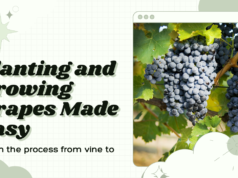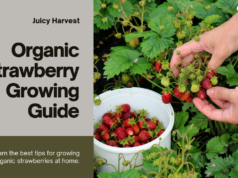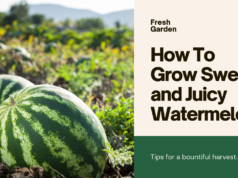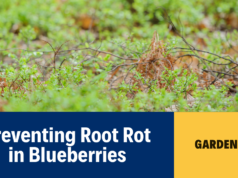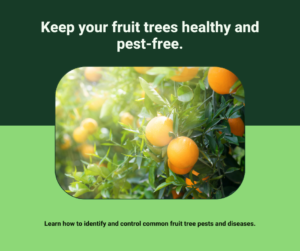
As a fruit tree owner, you want healthy trees that produce delicious, bountiful fruit. However, pests and diseases can wreak havoc on your trees, leading to reduced yields and even death. To ensure healthy, productive fruit trees, an effective pest and disease control plan is crucial. In this guide, you’ll learn valuable strategies to keep your fruit trees healthy and thriving.
Key Takeaways:
- Caring for fruit trees can be challenging without proper pest and disease control measures
- Identifying common pests and diseases is the first step in effective control
- Creating a healthy environment for fruit trees can prevent many issues
- Organic, biological, and chemical control options are available to address pest and disease problems
- Ongoing maintenance is crucial for long-term fruit tree health and productivity
Introduction to Fruit Tree Care and Pest/Disease Control
Welcome to the world of fruit tree care! Whether you’re a seasoned gardener or starting with your first fruit tree, it’s essential to understand how to care for your trees properly. Fruit trees require regular attention to reach their full potential and produce a bountiful harvest.
One of the most crucial aspects of fruit tree care is managing pests and diseases. Pests can cause significant damage to your trees, impacting their health and productivity. Different pests and diseases require unique control measures, and it’s essential to recognize the signs of infestation and take appropriate action promptly.
In this section, we’ll provide an overview of fruit tree care and the impact that pests and diseases can have on your trees. The knowledge gained will form the foundation for implementing effective pest and disease control measures to ensure your fruit trees remain healthy and productive.
The Importance of Fruit Tree Care
Proper fruit tree care involves multiple factors, including pruning, fertilization, watering, and pest and disease control. Neglecting any of these factors can lead to reduced yield and poor tree health. When taking care of your fruit trees, it is essential to be consistent with your care routine and follow best practices to ensure optimal growth.
The Impact of Pests and Diseases on Fruit Trees
Pests and diseases can have a significant impact on fruit trees. They can weaken the tree, reduce fruit production, and, in severe cases, result in the death of the tree. Prevention and timely interventions are crucial in managing these issues to ensure optimal tree health and productivity.
“Pest control is essential in fruit tree care as ignoring pests can result in significant damage to the tree, impacting yield and tree health.”_
-Adam Smith, Horticulturist
Recognizing Common Pests and Diseases Affecting Fruit Trees
As a fruit tree owner, it’s important to recognize the common pests and diseases that can negatively impact your trees. Identifying these problems early on can help you take appropriate measures to prevent their spread. Here are some of the most common pests and diseases that affect fruit trees:
Common Pests:
| Pest | Symptoms |
|---|---|
| Aphids | Deformed or curled leaves and stunted growth |
| Codling moths | Maggots in fruit and damaged skin or flesh |
| Scale insects | Sticky or sooty deposits on leaves and stems |
| Spider mites | Yellowed or spotted leaves and fine webbing on branches |
Common Diseases:
| Disease | Symptoms |
|---|---|
| Fire blight | Wilting or blackened leaves, blossoms, and fruit |
| Leaf spot | Yellowing or browning of leaves and fruit premature dropping |
| Powdery mildew | White or grayish powdery spots on leaves and shoots |
| Root rot | Yellowing and wilting of leaves and poor fruit production |
By learning how to identify these common pests and diseases, you can take a proactive approach to fruit tree care and keep your trees healthy and productive for years to come.
Preventative Measures for Fruit Tree Pest Control
When it comes to fruit tree care, preventing pest infestations is much easier than dealing with them once they’ve taken hold. By implementing preventative measures, you can minimize the risk of pesky insects causing damage to your trees. Here are some tips:
Choose Disease-Resistant Varieties
Opt for varieties of fruit trees that are less susceptible to pests and diseases. Disease-resistant varieties are often bred specifically with pest control in mind. Remember to choose varieties suited for your climate and soil requirements.
Maintain Proper Pruning
Pruning is key in fruit tree care. Proper pruning helps air circulation and light exposure, making trees less attractive to pests. Keep trees well-pruned and neatly maintained to reduce the risk of infestations.
Clean Up Fallen Fruit and Debris
Fallen fruit, leaves, and other debris create the ideal conditions for pests to thrive. Clearing up fallen fruit regularly can help reduce the risk of pest infestations. Composting the debris is always a great option.
Apply Dormant Oil
Dormant oil is a safe and effective way to protect trees from pests while they are dormant in winter. It is a type of oil spray that smothers pests and prevents them from causing damage. Apply it during the dormant period for best results.
Use Sticky Traps
Sticky traps are an easy and affordable way to monitor and control pests. They are available in a variety of sizes and can be used for a range of fruit tree pests. Hang them around the tree and check them regularly to identify and prevent potential infestations.
Choosing Disease-Resistant Fruit Tree Varieties
When it comes to caring for your fruit trees, selecting disease-resistant varieties is a crucial step in maintaining a healthy orchard. By choosing these varieties, you can prevent diseases from spreading throughout your trees. Here are a few tips to keep in mind when selecting disease-resistant fruit tree varieties:
- Research which varieties are resistant to common diseases: Check with your local cooperative extension service or nursery to see which varieties are resistant to common diseases in your area. For example, if fire blight is prevalent, select apple and pear varieties that are known to be resistant to this disease.
- Consider your climate and growing conditions: Certain varieties may be better suited for certain climates. Take into account the amount of sun, rainfall, and temperature fluctuations in your area when choosing disease-resistant fruit tree varieties.
- Choose reputable nurseries: Purchase disease-resistant fruit tree varieties from reputable nurseries to ensure that you’re getting high-quality, disease-free trees.
Once you’ve selected disease-resistant fruit tree varieties, it’s still important to continue with proper tree care, including regular pruning and fertilization, to keep your trees healthy and productive.
Creating a Healthy Growing Environment for Fruit Trees
If you’re looking to promote optimal fruit tree growth while preventing diseases, creating a healthy growing environment is crucial. Here are a few factors to consider:
Soil Health:
Your fruit trees’ roots need healthy soil to thrive. Ensure good drainage and proper aeration by breaking up compacted soil. You can also add compost or other organic matter to boost soil nutrition and microbiology.
Sunlight Exposure:
Most fruit trees require full sun exposure for maximum growth and fruit production. Make sure you plant your trees in a location that receives plenty of direct sunlight, avoiding shaded or partially shaded areas.
Proper Spacing:
For optimal fruit tree growth, it’s crucial to give each tree plenty of space to spread its branches and roots. Check the recommended spacing for your specific tree variety and make sure to plant accordingly.
Remember, a healthy growing environment is the foundation for healthy, productive fruit trees. Consider these factors and take the necessary steps to create the best environment for your orchard to thrive.
Organic Pest Control Methods for Fruit Trees
As an eco-conscious fruit tree grower, you may prefer to opt for organic pest control methods. These natural remedies can be just as effective as chemical alternatives but are gentler on the environment. Here are some excellent options to consider:
Companion Planting
Companion planting involves growing plants that can repel or deter pests near your fruit trees. For instance, planting chives, garlic, and other alliums around your trees can help repel aphids, while marigolds are said to keep spider mites at bay. Consider doing some research into companion planting for your specific fruit tree varieties to learn more about this method.
Homemade Sprays
You can make natural sprays at home using ingredients like soap, oil, and hot peppers. These sprays can suffocate pests or deter them from feasting on your trees. For example, a mixture of 1 tablespoon of dish soap, 1 cup of vegetable oil, and 1 quart of water can help combat mites, scales, and other pests. Spray this solution on your trees every two weeks for best results.
Neem Oil
Neem oil is derived from the seeds of the neem tree and has long been used as a natural insecticide. It works by disrupting the insects’ hormones, preventing them from laying eggs or feeding. Neem oil can effectively control a wide range of pests, including mealybugs, spider mites, and scale. Dilute the oil with water according to the instructions before spraying it on your trees.
Beneficial Insects
Many insects are actually helpful to your fruit trees, as they feed on the pests that can damage them. Consider introducing beneficial insects like ladybugs or lacewings to your orchard to help control pest populations. You can purchase these insects online or at your local gardening store.
Incorporating organic pest control methods into your fruit tree care routine can help protect your trees from pests while maintaining a healthy ecosystem. With careful attention and a bit of experimentation, you can find the right combination of natural remedies to keep your orchard thriving.
Biological Controls for Insect Pests in Fruit Trees
If you’re looking for an eco-friendly way to protect your fruit trees from insect pests, biological controls could be the solution. By using nature to your advantage, you can improve the health of your orchard without the use of harsh chemicals. Here are some biological methods to consider:
| Beneficial Insects | Microbial Agents |
|---|---|
|
|
Beneficial insects such as ladybugs and praying mantis prey on common fruit tree pests like aphids and spider mites. Trichogramma wasps are microscopic parasites that lay their eggs inside the eggs of certain pests such as codling moths, causing them to die before they can hatch. Meanwhile, microbial agents like Bacillus thuringiensis produce a toxin that kills pests like caterpillars, while Beauveria bassiana and Metarhizium anisopliae are fungi that infect and kill insects.
Keep in mind that while biological controls can be effective, they may take some time to work and may be less effective in severe infestations. It’s important to implement other pest control measures, such as preventative strategies and regular monitoring, to achieve optimal results.
Chemical Pest Control for Fruit Trees
Chemical pest control should be used as a last resort, after all other alternatives have been considered. However, in extreme cases where pests threaten the survival of your fruit trees, understanding the options available can be helpful to make an informed decision.
There are different types of chemical treatments available, such as contact insecticides, systemic insecticides, and fumigants. Contact insecticides work by directly killing the insects on contact, while systemic insecticides are taken up by the tree and protect it from future infestations. Fumigants are gaseous chemicals used to treat soil-borne pests. It’s crucial to understand the specific chemicals you’re using and their appropriate application rates to ensure safe and responsible use.
Always read and follow the instructions on the product label carefully, and wear protective gear such as gloves, goggles, and masks while applying pesticides. Avoid spraying during windy conditions to prevent chemicals from drifting to non-target areas. Be mindful of the risks pesticides pose to beneficial insects, such as pollinators, and avoid spraying when they’re active.
It’s also essential to observe proper storage procedures, keeping pesticides in their original containers and out of reach of children and pets. Dispose of empty containers responsibly and in a manner compliant with local regulations.
When using chemical pest control, it’s crucial to develop an integrated pest management plan that incorporates non-chemical approaches such as pruning, sanitation, and biological controls. This will help minimize reliance on chemical treatments and promote a more sustainable fruit tree care strategy.
Dealing with Fruit Tree Diseases
Fruit tree diseases can wreak havoc on your orchard, causing significant damage to tree health and productivity. However, with careful management and treatment, you can minimize their impact and ensure a thriving orchard for years to come. In this section, we’ll discuss some common fruit tree diseases and effective ways to tackle them, ensuring that your trees stay healthy and produce bountiful harvests.
Identifying Fruit Tree Diseases
One of the most critical steps in disease management is identifying the specific disease affecting your trees. Look for signs such as leaf spots, wilting, fruit discoloration, or unusual growth patterns. Below are the common fruit tree diseases:
| Disease | Symptoms | Treatment |
|---|---|---|
| Fire Blight | Burnt-looking twigs; blackened leaves; sunken cankers; oozing bacterial exudate. | Remove infected plant parts; disinfect pruning tools; use copper fungicide sprays. |
| Powdery Mildew | White powdery coating on leaves, stems, and fruits; curling and wilting leaves. | Remove infected plant parts; improve air circulation; use sulfur or neem oil sprays. |
| Apple Scab | Olive-green spots on leaves and fruit; brown lesions on leaves and twigs. | Remove infected plant parts; improve air circulation; use copper fungicide sprays. |
Note: make sure to follow the instructions on fungicide applications carefully to ensure effective and safe use.
Preventing Fruit Tree Diseases
Preventative measures are vital to minimizing the risk of diseases affecting your fruit trees. Here are some essential tips:
- Remove and dispose of infected plant material promptly.
- Keep your trees healthy through proper pruning and fertilization.
- Improve air circulation and light access by pruning and proper tree spacing.
- Choose disease-resistant fruit varieties, and plant trees appropriate for your climate and soils.
- Reduce water and nutrient stress through proper irrigation and fertilization.
Treating Fruit Tree Diseases
If you have identified the disease affecting your trees, it’s time to take action. Below are some effective treatment strategies:
- Prune infected plant material, and dispose of it appropriately.
- Use copper fungicide sprays on affected areas; follow instructions carefully.
- Apply natural remedies, such as neem oil, garlic sprays, or compost tea to affected areas.
- Use chemical treatments as a last resort, and ensure safe and responsible use.
By following these strategies for identifying, preventing, and treating fruit tree diseases, you can ensure long-term tree health and productivity. Remember to always monitor your trees regularly for any signs of disease and take prompt action if necessary.
FAQ
Q. Why is fruit tree care and pest control important?
A. Proper fruit tree care and pest control are essential for maintaining the health and productivity of your orchard. By addressing pests and diseases, you can prevent damage, ensure optimal growth, and increase fruit yield.
Q. What are some common pests that affect fruit trees?
A. Common pests that can impact fruit trees include aphids, caterpillars, fruit flies, mites, and scale insects. These pests can cause damage to the foliage, flowers, and fruits of the tree.
Q. How can I prevent pest infestations in my fruit trees?
A. There are several preventative measures you can take to minimize the risk of pest infestations in your fruit trees. These include regular pruning to improve airflow, removing fallen fruits and debris, using insect traps, and practicing proper sanitation in your orchard.
Q. Are there disease-resistant fruit tree varieties available?
A. Yes, there are many disease-resistant fruit tree varieties available on the market. When choosing fruit trees, consider selecting varieties that are known to have resistance to common diseases in your area. Consult with local nurseries or agricultural extension services for recommendations.
Q. How can I create a healthy growing environment for my fruit trees?
A. To create a healthy growing environment, ensure that your fruit trees are planted in well-draining soil, receive adequate sunlight, and have proper spacing between trees. Regularly test and amend the soil as needed and provide regular irrigation to maintain optimal moisture levels.
Q. What are some organic pest control methods for fruit trees?
A. Organic pest control methods for fruit trees include promoting beneficial insects, such as ladybugs and lacewings, using neem oil or insecticidal soaps, and applying homemade natural sprays made from ingredients like garlic, onion, and chili peppers.
Q. What are biological controls for insect pests in fruit trees?
A. Biological controls for insect pests involve introducing or encouraging beneficial insects, such as parasitic wasps, predatory mites, and nematodes, that naturally prey on the pests. These biological agents can help reduce pest populations and maintain a balanced ecosystem in your orchard.
Q. When should I consider using chemical pest control for fruit trees?
A. Chemical pest control for fruit trees should only be considered when other methods have failed or in severe infestation cases. If using chemical treatments, follow the instructions carefully, wear protective gear, and choose products labeled for use on fruit trees.
Q. How do I identify and treat common diseases affecting fruit trees?
A. Common fruit tree diseases include apple scab, brown rot, powdery mildew, and fire blight. To identify diseases, look for symptoms like spots, lesions, rot, or wilting. Treatments may include pruning affected plant parts, using fungicides, or improving cultural practices.
Q. What long-term care should I provide for my fruit trees?
A. Long-term fruit tree care involves regular pruning, fertilizing, and watering as needed. Continue monitoring for pests and diseases, practice good sanitation, and be vigilant in maintaining a healthy growing environment. This ongoing care will ensure the vitality and productivity of your fruit trees.
Conclusion and Long-Term Fruit Tree Care
Now that you’ve learned about effective pest and disease control methods, it’s important to continue caring for your fruit trees in the long term. By prioritizing fruit tree care and maintenance, you can prevent future pest and disease problems and ensure your trees remain productive for years to come.
Regular pruning, fertilizing, and watering are essential components of long-term fruit tree care. By keeping your trees healthy and well-nourished, they’ll be better equipped to resist pests and diseases.
It’s also important to monitor your trees regularly for signs of infestation or disease. Catching and addressing issues early on can prevent them from becoming more serious problems that require more drastic measures.
Finally, don’t forget to implement the preventative measures discussed in this article, such as choosing disease-resistant varieties, creating a healthy growing environment, and using organic or biological pest control methods. By taking a proactive approach to pest and disease control, you can minimize the need for chemical treatments and maintain a healthier orchard overall.
Incorporating these tips and techniques into your fruit tree care routine can help you achieve long-term success with your orchard. Remember, proper pest and disease control is just one aspect of fruit tree care – by following a comprehensive maintenance plan, you can enjoy delicious fruit and healthy, thriving trees for years to come.


